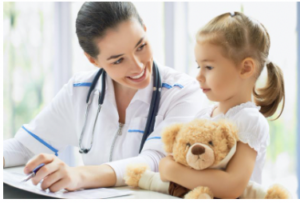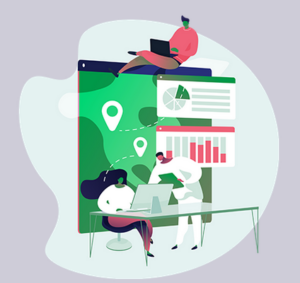- Social Factors Help Explain Worse Cardiovascular Health among Adults in Rural Vs. Urban Communities
- Reducing Barriers to Participation in Population-Based Total Cost of Care (PB-TCOC) Models and Supporting Primary and Specialty Care Transformation: Request for Input
- Secretary Kennedy Renews Public Health Emergency Declaration to Address National Opioid Crisis
- 2025 Marketplace Integrity and Affordability Proposed Rule
- Rural America Faces Growing Shortage of Eye Surgeons
- NRHA Continues Partnership to Advance Rural Oral Health
- Comments Requested on Mobile Crisis Team Services: An Implementation Toolkit Draft
- Q&A: What Are the Challenges and Opportunities of Small-Town Philanthropy?
- HRSA Administrator Carole Johnson, Joined by Co-Chair of the Congressional Black Maternal Health Caucus Congresswoman Lauren Underwood, Announces New Funding, Policy Action, and Report to Mark Landmark Year of HRSA's Enhancing Maternal Health Initiative
- Biden-Harris Administration Announces $60 Million Investment for Adding Early Morning, Night, and Weekend Hours at Community Health Centers
- Volunteer Opportunity for HUD's Office of Housing Counseling Tribe and TDHE Certification Exam
- Who Needs Dry January More: Rural or Urban Drinkers?
- Rural Families Have 'Critical' Need for More Hospice, Respite Care
- Rural Telehealth Sees More Policy Wins, but Only Short-Term
- States Help Child Care Centers Expand in Bid To Create More Slots, Lower Prices
Analyzing Rural Enrollment in Qualified Medicare Beneficiary Program Lags Behind Urban
 The latest Report to Congress from the non-partisan Medicaid and Children’s Health Insurance Program (CHIP) Payment and Access Commission (MACPAC) shows that the number of rural Qualified Medicare Beneficiaries (QMBs) who also receive full Medicaid benefits stayed relatively the same between 2010 and 2021, while the number living in urban areas increased. These “QMB plus” enrollees receive assistance from Medicaid with their Medicare premiums and cost sharing plus full Medicaid benefits through eligibility pathways, such as Supplemental Security Income benefits and the aged, blind, and disabled pathway for individuals who are low income and age 65 or older or who have a qualifying disability. This growing disparity between urban and rural enrollment may indicate that there are opportunities for future outreach to enroll more eligible rural enrollees in this assistance program. This report also provides recommendations to Congress to increase transparency in Medicaid and CHIP financing, tools that states can use to optimize state Medicaid agency contracts, and improvements to demographic data collection in Medicaid.
The latest Report to Congress from the non-partisan Medicaid and Children’s Health Insurance Program (CHIP) Payment and Access Commission (MACPAC) shows that the number of rural Qualified Medicare Beneficiaries (QMBs) who also receive full Medicaid benefits stayed relatively the same between 2010 and 2021, while the number living in urban areas increased. These “QMB plus” enrollees receive assistance from Medicaid with their Medicare premiums and cost sharing plus full Medicaid benefits through eligibility pathways, such as Supplemental Security Income benefits and the aged, blind, and disabled pathway for individuals who are low income and age 65 or older or who have a qualifying disability. This growing disparity between urban and rural enrollment may indicate that there are opportunities for future outreach to enroll more eligible rural enrollees in this assistance program. This report also provides recommendations to Congress to increase transparency in Medicaid and CHIP financing, tools that states can use to optimize state Medicaid agency contracts, and improvements to demographic data collection in Medicaid.
Examining Risk Factors for Poor Health Among U.S. Older Adults in Rural and Urban Areas: Injury, Food Insecurity, and Lack of Social and Emotional Support
 Among key findings in this brief from the University of Minnesota Rural Health Research Center:
Among key findings in this brief from the University of Minnesota Rural Health Research Center:
- Nearly 30 percent of rural and urban older adults reported experiencing at least one of the selected risk factors (injury, food insecurity, or lack of social and emotional support).
- Of the three risk factors, lack of social and emotional support was the most common, reported by over 18 percent of older adults from both rural and urban areas.
- Injury was the second-most reported risk factor and was more commonly reported by rural than urban older adults.
- Food insecurity was experienced by a slightly higher percentage of rural older adults than those in urban areas.
Participate in the HRSA Grantee Satisfaction Survey
 – Deadline Extended. Each program director of active HRSA grants has received an invitation to take our new and improved Grantee Satisfaction Survey. With the highest possible response rate through June 24, we can pinpoint crucial areas for action. For general questions about the survey, contact HRSAGranteeSurvey@hrsa.gov
– Deadline Extended. Each program director of active HRSA grants has received an invitation to take our new and improved Grantee Satisfaction Survey. With the highest possible response rate through June 24, we can pinpoint crucial areas for action. For general questions about the survey, contact HRSAGranteeSurvey@hrsa.gov
CRS Answers FAQs about Federal Funding for Health Care Facilities
 The Congressional Research Service (CRS) compiles Frequently Asked Questions (FAQ) with background information on federal programs, including those that may be available to support facilities during an emergency or natural disaster. There are many references to rural throughout, describing facility types, payment models, and rural-specific funding.
The Congressional Research Service (CRS) compiles Frequently Asked Questions (FAQ) with background information on federal programs, including those that may be available to support facilities during an emergency or natural disaster. There are many references to rural throughout, describing facility types, payment models, and rural-specific funding.
White House Releases Factsheet Highlighting Efforts Toward Cybersecurity in Healthcare
 Responding to recent cyber attacks in the health care sector, the White House outlined a number of actions to mitigate further disruption to providers and patients. The factsheet notes rural providers such as Critical Access Hospitals and Rural Emergency Hospitals are particularly vulnerable and details commitments from leading technology companies to provide free and low-cost resources for rural hospitals across the country.
Responding to recent cyber attacks in the health care sector, the White House outlined a number of actions to mitigate further disruption to providers and patients. The factsheet notes rural providers such as Critical Access Hospitals and Rural Emergency Hospitals are particularly vulnerable and details commitments from leading technology companies to provide free and low-cost resources for rural hospitals across the country.
HRSA Makes Awards for the Rural Health Network Development Planning Program

The Federal Office of Rural Health Policy, located in HRSA, awarded approximately $3 million to 30 awardees through the Rural Health Network Development Planning Program to support organizations in their efforts to develop integrated health networks to conduct planning activities over the course of one year, with the goal of expanding access and improving quality of care in the rural communities they serve. The project period is July 1, 2024 through June 30, 2025.
HRSA Invests $11 Million to Expand Medical Residencies in Rural Communities

Today, HRSA announced awards of more than $11 million to 15 organizations to strengthen the health workforce in rural areas. Administered through the Federal Office of Rural Health Policy, located within HRSA, the Rural Residency Planning and Development Program supports the planning and establishment of new residency training programs in family medicine, internal medicine, psychiatry, preventive medicine, obstetrics and gynecology, and general surgery. HRSA-funded research has found that more than half of rural U.S. counties lack hospital obstetric services. In response to the declining rural access to maternal health care, one of the awards will be used to create the first obstetrics and gynecology Rural Track Program in the country. Another six of today’s 15 awards will be used to develop new family medicine residency programs with a focus on enhanced obstetrical training in rural communities. Award recipients will each receive up to $750,000 over three years to establish new rural residency programs. They will use this funding to support accreditation costs, curriculum development, faculty recruitment and retention, resident recruitment activities, and consultation services to inform program development. These awards complement efforts by the Administration and by Congress to reform and expand Medicare payment policies for residency training.
National Dental and Fluoridation Associations Respond to New Fluoride Study
The Journal of the American Medical Association (JAMA) recently published a study that examined fluoride exposure during pregnancy. In response to the release of the study, the American Dental Association and American Fluoridation Society released statements and resources affirming support of fluoride for oral health.
Click here to read the American Dental Association statement.
Click here to read the American Fluoridation Society Key Messages.
HRSA Releases Updated HPSA Data

The U.S. Department of Health and Human Services’ Health Resources & Services Administration (HRSA) released updated data on Health Professional Shortage Areas (HPSAs). In addition, they updated the number of additional dental health practitioners needed to support the HPSAs. The number of HPSAs has grown nationwide since February. The updated data are available on the HPSA dashboard.
Final Recommendation Statement: Implementing Interventions to Prevent Falls in Community-Dwelling Older Adults

The U.S. Preventive Services Task Force released a final recommendation statement on interventions to prevent falls in community-dwelling older adults. The Task Force found that exercise can help prevent falls in adults 65 and older who are at increased risk. Additional interventions might be helpful for some older adults. To view the recommendation, the evidence on which it is based, and a summary for clinicians, please go here.
